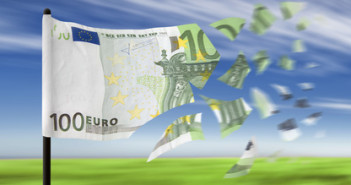EUR/USD began the new week with a small recovery, but isn’t able to climb back above the level it lost on Friday. Euro-zone PMIs came out better than expected and supported the pair, as tension mounts towards the ECB decision. The focus now shifts to the US, where we get the first hint for the Non-Farm Payrolls.
Here is a quick update on the technical situation, indicators, and market sentiment that moves euro/dollar.
EUR/USD Technical
- EUR/USDÂ managed to climb a bit, but 1.3515 caps it..
Current range: 1.3450 to 1.3515
Further levels in both directions:

- Below: 1.3450, 1.34, 1.3320, 1.3240, 1.3175 and 1.31.
- Above: 1.3515, 1.3580, 1.3650, 1.37 and 1.3800.
- 1.3515 switched positions from support to resistance.
- 1.3450 is important support, yet still far.
- Diagonal lines: EUR/USD lost uptrend support, and is now trading alongside downtrend support.
EUR/USD Fundamentals
- 8:15Â Spanish Manufacturing PMI. Exp. 51.3, actual 52.2 points.
- 8:45 Italian Manufacturing PMI. Exp. 54.2 actual 53.1 points.
- 9:00 Euro-zone final Manufacturing PMI. Exp. 53.9, actual 54 points.
- 14:00 US Final Markit Manufacturing PMI. Exp. 53.8 points.
- 15:00 US ISM Manufacturing PMI. Exp. 56.2 points
- 15:00 US Construction Spending. Exp. +0.3%.
*All times are GMT For more events and lines, see the Euro to dollar forecast.
EUR/USD Sentiment
- Will the ECB react to lower inflation?: Euro-zone inflation remains low, with the headline figure at the lows of October: 0.7%. Core inflation is at 0.8%, still higher than the lowest level of 0.7% seen in December. Nevertheless, the euro is weaker on expectations for a move from the ECB. Will the central bank act now or later? ECB Preview: 5 scenarios – negative deposit rate now, or later?.
- US enjoys strong growth, but with a caveat:Â US GDP growth came out at 3.2% in Q4, as expected. However, the big contribution of inventory buildup is not a good sign: inventories could be depleted later on. This week we have top tier events building up towards the Non-Farm Payrolls on Friday.
- Yellen takes over the Fed: . In his last decision as Fed Chairman, Bernanke cut its stimulus program by another $10 billion, lowering QE to $65 billion each month. The Fed still plans to wind up QE by the end of the year, so we can expect further tapers, barring any surprise downturns in the US economy. Janet Yellen is the new head of the Federal Reserve, and she is likely to continue the same policy.
- Emerging markets still in trouble: The taper, as well as issues in local economies, is taking its toll on the emerging markets such as Brazil, India, China, Turkey, South Africa and Indonesia. The efforts to strengthen the local currencies has had limited success, and some estimate that the outflow of money from these nations has only just begun. Flows out of these countries and into Europe could keep the euro bid. In the meantime, the situation seems to be contained, but this may not last for too long.
- German unemployment tumbles, retail sales fall: The German locomotive continues to pick up speed, much to the delight of the markets. This time it was Unemployment Change, which sparkled in December with a drop of 28 thousand, crushing the estimate of a drop of 5 thousand. This was the indicator’s best showing since March 2011. The Unemployment Rate stayed pegged at 6.8%. Earlier in the week, Consumer Climate and Ifo Business Climate rose, indicating that German businesses and consumers are optimistic about the economy as we begin 2014. Germany is the Eurozone’s largest economy, and the region will need Germany to lead the way to an economic recovery. However, not all is rosy, especially with the big fall in retail sales.
More:Â Bidding up the dollar



